Roam Means Nevada
Winter 2022-2023
Nowhere is ‘this land is your land’ more true than in the Silver State.
BY MEGG MUELLER
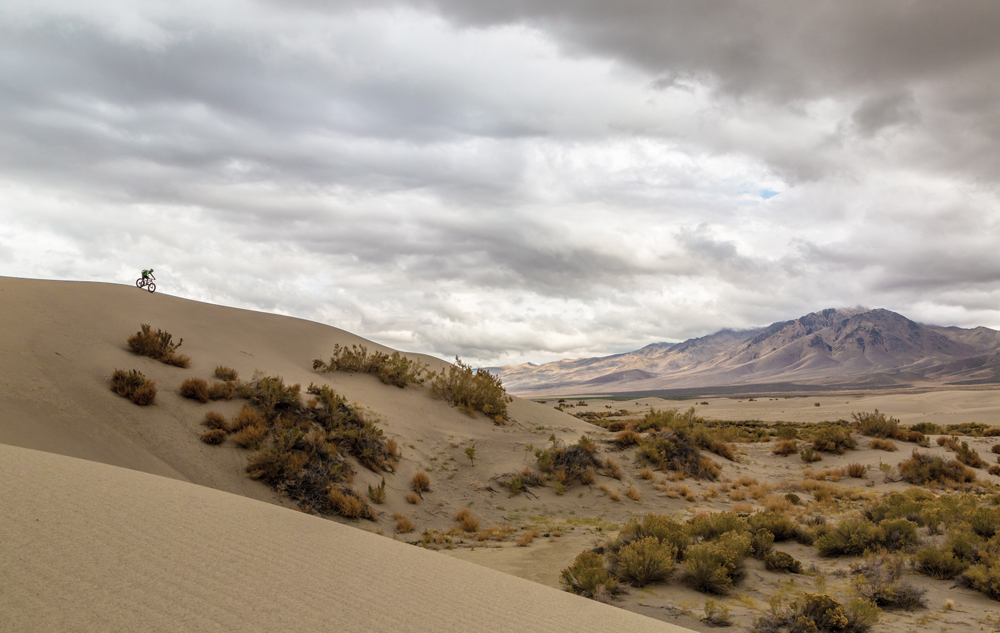
One of the greatest appeals of the American West has always been that sense of unbridled freedom and room to roam. In the crowded world we live in today, it might be hard to picture that solitude and deep connection with nature, but for the modern-day pioneer, it is still within reach in a place called Nevada.
While it may be just the seventh largest state, Nevada is the unrefuted king of public lands in the contiguous U.S. More than 48 million acres of land are managed by federal agencies. As the largest public land manager in Nevada, the Bureau of Land Management (BLM) manages national monuments and national conservation areas, national scenic and historic trails, and more than 50 wilderness areas.
Only Alaska has more public land, but as the BLM’s Nevada Recreation Program Lead Miles Gurtler points out, Nevada still has an advantage.
“A lot of Nevada areas, you can drive to,” he notes. “In Alaska they’re much harder to reach. We’re much more accessible.”
Gurtler’s statement can lead to a question for people unfamiliar with the concept of public lands, however: “Accessible for what, exactly?”
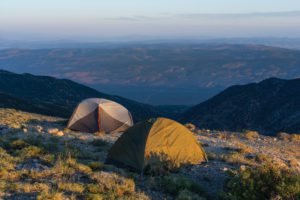
PRIVATE AND PUBLIC AND FEDERAL, OH MY
Some U.S. states have a very small percentage of public lands—consider Kansas, which has just under 2 percent. Nevada, on the other hand, has more than 67 percent public land managed by the federal government. When faced with a BLM (or Fish and Wildlife Service, or Forest Service) sign, many believe that means the area is federally owned land, therefore off-limits to any recreational pursuits. Wrong, says Gurtler. He says he hears the flip side, too, where people believe if it’s BLM land, you can do whatever you want. Wrong again.
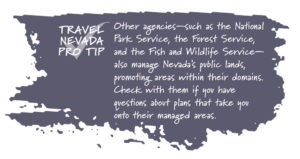 “More than 99 percent of those 48 million acres is open to the public for recreation and hunting,” he says. “But along with that comes a serious responsibility to recreate responsibly. (That responsibility) is very important because there’s a lot of freedom on BLM land: in many areas, you may not find rangers or law enforcement. You can really get out there and enjoy the solitude.”
“More than 99 percent of those 48 million acres is open to the public for recreation and hunting,” he says. “But along with that comes a serious responsibility to recreate responsibly. (That responsibility) is very important because there’s a lot of freedom on BLM land: in many areas, you may not find rangers or law enforcement. You can really get out there and enjoy the solitude.”
The easiest type of land to understand is private. Any privately owned lands are likely well signed and likely even gated, giving plenty of warning to anyone hoping to wander freely. But speaking of gates…
Many areas in Nevada’s miles and miles of space have fences, for a handful of reasons. The most obvious is to denote the boundaries of a privately owned section of land, but there is also a lot of fencing that exists to restrict grazing animals from accessing roadways. Other fences are more historic in nature and don’t reflect actual legal boundaries. Whatever the reason for the fence is, there are many roads that traverse the public lands in Nevada. If met with a gate that has no locking mechanism or signage, it’s an indicator that land can be accessed by the public. The most important consideration is to leave the gate as you found it; if it was open, leave it open, and if it was closed, well you weren’t born in a barn, so close it.
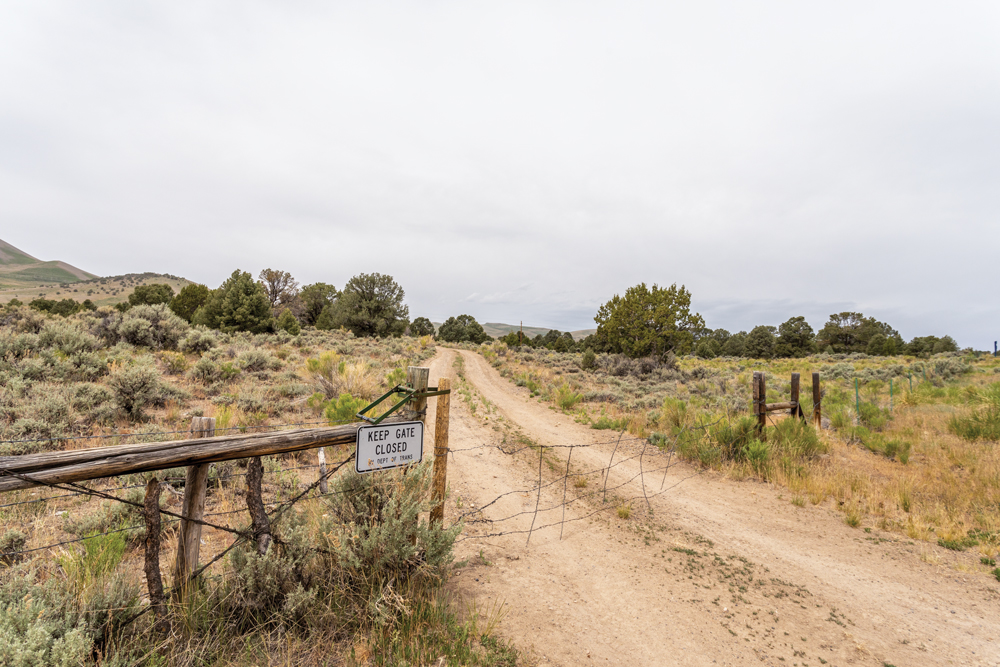
NOW WHAT?
OK, there’s all this land that can be used, so what is there to do? As noted, wilderness areas, historic and scenic trails, national monuments, and more await on Nevada’s public lands. Some of these areas require serious trekking to access, but others are close to (or even on) paved roads. The question goes back to the user: what do you want to do?
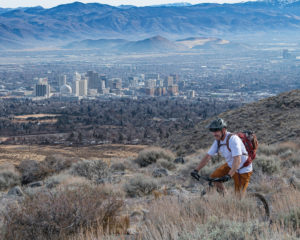
“People want to use public land for all kinds of different purposes,” Gurtler says. “Our goal is to try and meet people where they are. For instance, around Reno, a big chunk of the eastern side of the Truckee Meadows is BLM land. It’s basically in people’s back yard.”
In that big back yard, the activities are limited only by the imagination: from hiking trails to OHV and ATV roads, horseback riding to bird watching, the only caveat is “know before you go.” That adage extends to contacting BLM to confirm the land is public before camping, knowing the restrictions on removing artifacts (the short answer is don’t), checking the weather, and planning for the terrain conditions you hope to visit.
One of the most sought-after activities on public lands is dispersed camping. The majority of the state is open to people looking to camp away from designated campsites. If it’s public land, Gurtler notes, you can use it. While there are some places with more restrictions, it’s pretty simple.
“You’ve got to follow the recreate responsible guidelines, and you can only stay 14 days in any spot,” he says.
Everyone who visits Nevada’s public lands must practice good stewardship. It’s a crucial aspect that keeps the land remaining public and conflict free.
“Recreation isn’t the only thing that happens on BLM lands,” Gurtler says. “There’s active mining, grazing, and wild horses. Some of those activities are not compatible with people recreating around them.”
Following posted signage is incredibly important. It’s up to adventure seekers to know who owns the land before they go, and to that end, he adds, hunters in Nevada are some of the savviest recreationalists about land ownership.
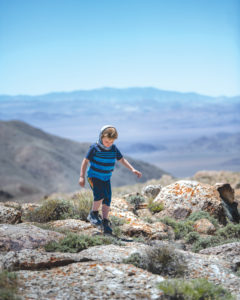
While a good portion of Nevada’s vast landscapes feature rugged, remote terrain (think no cell service, water, or gas), public lands are for everyone. You don’t have to try and bag a soaring mountain peak to be an adventurer; a family picnic overlooking one of the state’s sweeping valleys is enough to earn bragging rights, too.
“We really try to serve a lot of different public goals, from trailheads to people overlanding. We are trying to promote destination tourism,” Gurtler says.
CAMPING ON PUBLIC LANDS
• Don’t drive off existing roads to camp
• Use a previously used campsite if possible
• Always follow local fire restrictions
• Leave No Trace
Want to read more about recreating responsibly? Click here!
To view BLM’s Nevada Map, click here!

